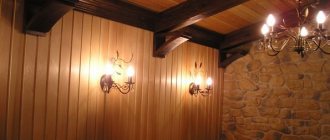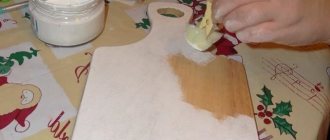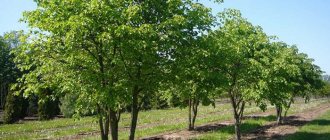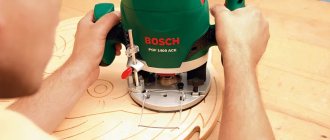Russian folk toy is an important ethnic element and a monument of traditional culture of the Russian people. It is a synthetic type of folk art, which combines the means of decorative, applied and fine arts, and musical elements. A toy is also a traditional element of child rearing. Children learn about the world and socialize in society through play. Traditional folk toys vary in type, material and manufacturing method. In addition, there is a relationship between folk toys and different types of economic activity of people, tools and religious beliefs. The folk toy was an important element in the socialization and education of children.
Kargopol Russian folk toy
Russian folk toys are attractive for their ambiguity, depth, symbolism of the image, decorativeness, brevity, sense of the material and its natural properties, traditional technological techniques, conventionality of images and much more. Folk toys depict people, fauna objects: birds, deer and elk, bears, horses, goats and other animals. Russian traditional toys are made mainly from clay, wood, straw and birch bark.
Dymkovo Russian folk toy “Water-carrier”
Russian folk toys have different symbols. For example, a toy in the shape of the sun, a rocking horse, or a swing is a symbol of well-being. A toy in the shape of an egg, a rooster - a symbol of the sky. The deer symbolizes sunlight, peace on earth and a happy marriage. The bear is a symbol of strength and wealth.
Russian folk toy made of clay and wood
Over the centuries, residents of a certain region have created and passed on from generation to generation original traditions of making folk toys, which were unique, original and combined the national characteristics of a certain region of Russia. By the external features of the Russian folk toy, one could understand in which particular area it was made.
Bogorodskaya Russian folk toy made of wood
As mentioned above, toys were mainly made from two materials: clay (Abashevskaya, Dymkovskaya, Kargopolskaya, Pleshkovskaya and Filimonovskaya toys) and wood (Bogorodskaya Mazykskaya toy, matryoshka, bird of happiness).
DIY toys
If you intend to create wooden toys with your own hands with your child, it is better to start with simple designs. If you plan to build a house or its bird equivalent (birdhouse, feeder), you should make sure that the boards, perches and slats used in the work are sanded. This will speed up the process and avoid splinters.
For beginners, the best option for creating wooden toys is to create figurines from blanks. On special websites or in stores you can purchase processed wooden beads, planks, boards or a construction set (assemble the toy yourself). All that remains is to assemble, secure and decorate (paint, paste over) the finished structure.
Wood, as a material for the production of toys, will never lose its relevance. Simple, convenient and bright sets will not only be interesting, but also as safe as possible for the child, which is extremely important at any age.
Abashevskaya Russian folk toy
Abashevo Russian folk toy is made of clay. Its name comes from the village of Abashevo, Penza province. In the 19th–20th centuries. The best pottery masters lived in the village of Abashevo, whose works were valued throughout Russia. In the Penza province, in the village of Abashevo, there were rich deposits of clay, which was originally used to make beautiful dishes. Abashevo toys were first made in the mid-19th century for children's games. But after a while, the toys began to be given a satirical character, with the aim of ridiculing liars and those who profit from their neighbors.
The peak of development of the Abashevo toy came in the 20th century, when many craftsmen in making dishes from clay could no longer compete with factories. It was during this period that most craftsmen began making whistles, which aroused genuine interest and even delight among children. One of the famous masters of that period was Timofey Zotkin . His works had a significant influence on subsequent generations.
Abashevskaya Russian folk toy
The subjects of Abashev's toys are varied, among the main ones are animals and birds, the main feature of which is an overly long body with a neck and short legs. Animals were often depicted with lush curls and beards. Mostly they sculpted rams, deer, and goats. In appearance they resemble fantastic centaurs, which are characterized by some satire. Abashevo's toy is designed to ridicule human vices, especially love of money and deception. That is why, along with unusual animal figures, you can see an elegant young lady, a dashing horseman and a prince in the form of a ram with a human face.
When making a toy, the master uses clay and several stacks, with the help of which he forms a figurine, makes holes and patterns. Afterwards the product is fired and painted. To paint the Abashevo toy, craftsmen used oil and enamel paints, which ensured the durability and richness of the designs. The theme of the painting is, first of all, nature and the surrounding world, not devoid of symbolism. The Abashevo toy is dominated by red, green and blue colors.
Dymkovo Russian folk toy
The Dymkovo Russian folk toy, which is also made from clay, is widely known to this day. The Dymkovo toy has been made for centuries. Such a toy was made in the settlement of Dymkovo, located near the city of Kirov. Craftsmen worked in the Dymkovo settlement alone and in families. By the beginning of the 19th century, toys from Dymkovo spread throughout Russia.
Dymkovo folk toy “Girl with a samovar”
In those days, more than 100 thousand toys were produced per year, which went on sale, including in the capital and in the Orenburg province. 59 families from Dymkovo worked on their creation. The most famous masters were the Koshkins and Nikulins . At the beginning of the 20th century, Dymkovo toys lost their former popularity, although already in the 1930s the Dymkovo craft began to revive in Kirov. The Dymkovo toy is traditionally made in the form of a lady, horsemen, hussars, fantastic birds and animals, and there are also multi-figure plot compositions.
The process of making a Dymkovo toy consists of two stages: sculpting the product and painting it. There are traditions in creating the shape of a toy and in its design, which are expressed primarily in staticity, splendor of forms and brightness of painting. For example, in the composition “Mother with Children” the figure of a woman looks straight ahead, she seems to have frozen in this position. The same static quality is present in toys depicting birds and animals.
The following images of Dymkovo toys are especially popular::
- The turkey is as colorful as a peacock.
- The lady is both an elegant city person and a traditional peasant woman in a kokoshnik. Children can be depicted next to her.
- Lamb - figurines of this animal can have horns of different sizes. Note that they are always gold plated. Lambs are depicted as ordinary or in elegant clothes.
- The horse is traditionally in bright blue colors.
- Men in Dymkovo toys are most often depicted as a rider on a horse, a walking city or village gentleman.
- Pigs, birds, bells. They are depicted in different variations and tones.
Dymkovo Russian folk toy
To make the Dymkovo toy, Vyatka red clay and river sand are used. Each part of the toy is created separately: a body is molded from a round piece of clay, onto which the remaining parts of the toy are attached. Next, the product is dried in the open air for several days. Then it is burned on fire. In Rus' they used a stove for this. Today it is a muffle furnace, where the temperature reaches 1000 °C. When the figurine cools, it is bleached. In Rus', milk was also used for this.
The next stage is coloring. In ancient times, natural dyes based on eggs, milk, soot, vinegar, and tempera were used for this. These days, acrylic paints are most often used. Bird tails, animal horns, and people's clothing are covered with copper leaf (thin foil). Dymkovo toys are characterized by the use of red, blue, yellow, emerald, light blue, green and orange. White and black paint are used in small quantities. Each color with which the toy is painted has its own meaning: white is a symbol of purity; black - lies; green - nature; red - strength, health; blue - sky.
The patterns used in painting Dymkovo toys are closely related to folk beliefs and symbols of nature. For example, the sun and moon are a symbol of the origin of life; diamonds are a sign of fertility; waves are a sign of sky and moisture. The final stage of painting is the application of gold leaf. Currently, the Dymkovo toy is developing, new technologies are emerging, fresh ideas are appearing, but the manufacturing traditions remain unchanged.
Kargopol Russian folk toy
The clay Kargopol toy is known throughout Russia and abroad. The name of the product comes from the ancient city of Kargopol, Arkhangelsk province, which in ancient times was one of the centers of the Old Believers. It is known that the residents of this city and its environs have long been engaged in pottery and making traditional toys.
Compared to the brightly colored Dymkovo and Filimonov toys, the Kargopol toy is harsh in appearance. It is characterized by a multi-figure composition (merry troikas with riders in sleighs, dancing figures, boat rides, fairy-tale scenes, etc.). All the figures are slightly squat, with short arms and legs, they have an elongated body, a thick and short neck and a relatively large head. It is interesting that the animals are depicted with thick paws.
The Kargopol toy has a village theme. The heroes of local craftsmen are ordinary Russian people working in the fields, plowmen and sowers who rest during lunch, women who wash clothes and nurse children. Often, masters created not only existing, but also fictional animals. For example, a half-horse, half-man, who is depicted in military uniform with orders; a two-headed horse or the Sirin bird.
Kargopol Russian folk toy
Kargopol craftsmen humanized real animals, that is, they painted clothes, household items, and musical instruments for them. They depicted bears, moose, rams, horses, cats, dogs, birds. Women were depicted in long sundresses, their hair was braided, beads were painted on their necks, and a bundle with a baby or a dish of food was placed in their hands. The man was always depicted with a thick beard, wearing a painted shirt, loose trousers and high boots with low heels. A cap or hat is on your head to protect you from the sun.
Each toy has its own symbolism and hidden meaning. The woman is a symbol of the Earth, fertility, and nurse. A bear is a symbol of the owner of the forest, a deer or ram is a symbol of the sky and the sun. The Kargopol toy was made from a single piece of clay, sometimes additional elements were added. After firing, the figurine was placed in a thick flour solution. Thanks to the burnt flour, bizarre dark patterns appeared on the surface, which were later covered with paints. This technology gave the figure relief and volume. The most popular colors for painting were red, green, yellow and blue.
Kargopol Russian folk toy
The toy was always decorated with a pattern: in images of people it was an ornament on clothing, and animals were decorated with horns or limbs. The pattern was simple and uncomplicated: wavy lines, geometric shapes and flowers. In addition, images on the toy of the sun, sky, moon, fire, earth and water served as a pattern.
Why you should pay attention to wooden toys
Wood has a number of useful properties for which it is valued and chosen as a material for children's toys.
- The material is completely natural, environmentally friendly;
- Wood does not cause allergies;
- It will not harm a baby who wants to chew on a wooden toy; on the contrary, it will strengthen his teeth and gums. The exception is toys coated with paint or varnish;
- Wooden toys do not break when dropped. They may develop minor scratches, but this does not affect their functionality in any way.
Pleshkovskaya Russian folk toy
Toys from Pleshkovo are molded from a mixture of clay and mica. After firing the toy, mica inclusions give the product an additional silvery shine and sparkles over the entire surface. Burnt whistles have a porous structure and a pink tint. Craftsmen paint the clay in a free manner and distribute natural paint in spots. Initially, no paint was used at all in the manufacture of Pleshkovo toys, but more modern craftsmen grind bricks to completely cover the whistle and mix it with burdock or hemp extract. Previously, it was enough to find the required amount of local golden clay and draw 2-3 stripes along the figurine.
The name of the toy comes from the village of Pleshkovo, Oryol province. The toys are simple and concise. The main colors of the Pleshkovo toy: blue, red, green. When painting the product, natural dyes were used - elderberry and burdock juice, which were applied to the surface of the figure in the form of spots. The subjects of Pleshkovo toys are different: animals (horses, rams, cows, deer, roosters), birds (ducks), people (soldiers, ladies), fantastic creatures (mermaids, birds - sirins).
Pleshkovskaya Russian folk toy
The theme of peasant life was also widespread. For example, a very popular image for a clay figurine is a woman with a baby on her left arm. Among the livestock, cows, roosters, rams, and horses were most often depicted.
Pleshkovskaya Russian folk toy
Nowadays, Pleshkovo bells and whistles are created using traditional technology and ancient Russian mythical symbols, for example, mermaids.
Interior
The interior type of toys allows the child to get acquainted with household items in miniature. Essentially, in the form of a game, by placing his toys in ordinary everyday situations, the child understands the principle of simple processes (eating, sleeping, cleaning).
Wooden elements in this direction are especially popular, as they are characterized by durability and maximum identity with real objects. Here can be used:
- kitchen furniture (tables, chairs);
- beds;
- wardrobes, chests of drawers.
The best option in this case is to combine all the parts into a single system inside an improvised dwelling. The latter can be a box, a shelf in a closet, or a full-fledged wooden toy - a house.
Filimonovskaya Russian folk toy
Filimonovskaya Russian folk toy also belongs to clay. The toy was made in the village of Filimonovo, Odoevsky district, Tula province. This village is located near deposits of good white clay. Philemon lived in this area , who made toys. Filimonovskaya traditional toy is made in the form of a lady, a peasant woman, a soldier, a dancing couple, as well as in the form of animals, for example, cows, rams, foxes, roosters and fantastic forest creatures.
Filimonovskaya Russian folk toy “Lady with a samovar”
By the middle of the 19th century, the Filimonovo fishery became widely known outside the Tula province. The Russian people loved bright, original clay figurines, bought them at fairs and gave them to children. At this time, almost all residents of the village of Filimonovo lived from pottery production. But at the beginning of the twentieth century, the fishery lost its former popularity. People began to look for new ways to earn money, craftsmen began to lose their skills, therefore, the number of masters and craftswomen decreased significantly. Three women lived in the village who did not lose the art of modeling and continued to make toys. Production more or less improved in the 1950s, when interest in Filimonov toys began to revive among the people. In the 1980s, the Filimonov toy regained its former popularity and reached new heights, thanks to a creative group consisting of graduates of the artistic and industrial lyceum.
Most Filimonov toys are used as whistles. There are also local features of the toy image. For example, a lady is always sculpted in a long skirt, in the shape of a bell, with a hat on her head. The man is depicted in a uniform with shoulder straps, a cap with a visor and boots with a small heel. Animals are depicted with a thin waist and a long graceful neck. Sometimes it is difficult to distinguish animals from each other, and only the color of the figure or certain features helps with this. The horse is sculpted with small brown ears, the ram with round horns, and the cow with a crescent-shaped horn.
In general, the Filimonovskaya toy differs from others in its elongated shape and elongated proportions. This is dictated by the characteristics of the area, since the Tula region has rich deposits of fatty clay; it is well suited for shaping, but when dried it settles significantly and cracks. Craftsmen repeatedly straighten the figure, stretching it, thereby hiding uneven contours and cracks.
Filimonovskaya Russian folk toy “Ram”
The Filimonov toy is sparsely painted. The colors used are mainly yellow, red and green, and sometimes blue and violet. However, painting occurs in a certain order: initially they paint yellow spots, then outline them in red, or draw patterns, and then complement them with green. They start painting with patterns from the center, using a smooth transition to the edges of the product. It should be noted that the patterns are very simple and straightforward: stripes, herringbones, geometric shapes and stars. When painting a Filimonovskaya toy, floral patterns predominate: leaves, sun, branches, berries and flowers.
Russian folk toy made of wood. Bogorodskaya toy
Bogorodskaya Russian traditional toy comes from the village of Bogorodskoye, Moscow province. The toy is made of wood, mainly linden. Before making a toy, the linden tree must dry for two years. Wood chips are used to make toy stands. Bogorodsk toys are rarely decorated or painted. In Rus', the surface of finished figurines was cleaned with sandpaper. Next, the toys are finished with carvings, which rhythmically lie on the surface and decorate the product. Traditionally, some parts of the toy were made movable. Some toys were mounted on stands-bedside tables, and a spring was inserted inside - it brought the figure into action.
Bogorodskaya Russian folk toy
Other toys were made on spreader bars (“Herd”, “Cavalry”, “Soldiers”). There are toys whose moving parts are attached to weighted strings; the weight swings, pulls the thread, it activates parts of the figures. The subjects of the Bogorodsk toy are varied - these are heroes of fairy tales and fables.
Musical
Musical toys are aimed at developing hearing, both general and musical, as well as the voice. Playing such instruments has a beneficial effect on a child’s motor skills.
Wooden musical sets can belong to different categories of musical instruments (strings, percussion, wind).
The most popular are:
- harps or guitars;
- rattles, spoons;
- pipes, whistles;
- xylophones.
Mazyk Russian folk toy
The wooden Mazyk Russian folk toy is very rare. It was made for relatives - children, wives, parents, etc. In Rus', the Mazyk toy was called “Bolvashka”, “tararushka”, “chip goods”. The type of carving that is made for the toy was preserved among the Mazyks, part of the community of the Ofeni, peddlers, who lived in the former Vladimir province - this is where the name of the product comes from. The subjects of Mazyk toys are varied: people, animals, birds.
Mazyk Russian folk toy “Konik”
The main feature of toy production is the use of only an ax; other tools are used extremely rarely. The toy is made of pine, aspen or linden. Traditionally, it is made from logs with protruding knots. These knots are used in the product; they can turn into a tail or beak, or they can become fins for a pike.
How to choose wooden toys
The younger the child, the more serious the approach to choosing toys for him. You need to make sure that the toy does not contain small elements that the baby could inhale or swallow.
It is also not advisable to buy painted wooden toys for your baby, so that he does not damage the paint with his teeth.
The main principle of choice is compliance with the age and interests of the child.
- If he likes to collect construction sets, then wooden ones will please him, but if this is not interesting to him, the box with parts will just gather dust on the shelf.
- It's worth thinking about buying something else. Photos of wooden toys are widely available on the Internet. They will help you get an idea of the product.
- You can also get acquainted with the prices of similar products. Too low prices should alert you.
They may not meet safety requirements. Too expensive ones are impractical to buy. Therefore, you should focus on the average price category.
Matryoshka
The Russian nesting doll is known and loved all over the world. The birthplace of the nesting doll is considered to be the city of Sergiev Posad, where a wooden lady was first made, from which, when opened, similar female figures of different sizes appeared. The invention of the Russian nesting doll dates back relatively recently - the end of the 19th century. During this period, the famous turner V.P. Zvezdochkin , who was engaged in the manufacture of wooden toys, at the request of the artist S.V. Malutina made a blank from wood, into which he placed the same opening blanks, but different in size.
The subject for painting the very first toy was the everyday affairs of Russian beauties. The matryoshka consisted of 8 wooden dolls. Later, the number of dolls varied and even reached 48 wooden ladies. Matryoshka dolls were produced in the artel of S.I. Mamontov in Sergiev Posad. The Russian nesting doll was exhibited at exhibitions in Paris. This amazing toy attracted the attention of foreigners, who began placing orders with Russian craftsmen.
Russian doll
Mostly matryoshka dolls were distributed, which consisted of 3, 8 and 12 dolls. The more dolls there were, the more valuable the matryoshka became. The main theme of the nesting dolls was everyday life. Most often they depicted the home activities of ladies. The girls were depicted in traditional outfits and always wearing a headscarf. The girls held sickles for the harvest, jugs of milk, and baskets of berries in their hands. Later, other subjects began to be depicted on matryoshka dolls, for example, characters from fairy tales and fables, heroes from stories by famous writers.
Once they tried to change the shape of the nesting dolls, for example, cone-shaped dolls appeared that were inserted into one another. But this form was not popular among the people, so the masters returned to the previous one.
The dolls also differed in their painting. Currently, the following types of painting are distinguished:
- Zagorsk (bright, rich colors and many small, clearly drawn elements);
- Merinovskie (large flowers);
- Semenovskie (strict symmetrical painting);
- Polkhovskie (image of rosehip flowers);
- Vyatskie (northerner young lady).
To make nesting dolls, linden is used, which, after painting, is coated with a transparent oil-based varnish. First, the craftsman grinds out the smallest solid figure. Then he makes the bottom of the next figure. After processing, this element dries well, and only then the upper part of the figure is adjusted. According to this scheme, all the components of the nesting doll are prepared. Dried parts must be treated with starch glue, which serves as the basis for painting. After the product has dried, begin painting the nesting dolls.
Matryoshka
First, the master draws the face. The head of the nesting doll is depicted covered with a scarf, which is painted in traditional Russian patterns. The type of clothing most often depicted is a sundress; sometimes it is complemented by an apron. The figurine is decorated with floral ornaments. After the paint has dried, a finishing layer is applied, which protects the nesting doll from moisture and chips.
Wooden construction sets
Everyone is familiar with the wooden construction toy. In Soviet times, each kindergarten group had large plywood boxes with retractable lids filled with cubes, cones, arches, and planks.
As a rule, they were not painted, but only an unobtrusive pattern was burned out. Such details made a real fairy-tale mansion with carved gates and windows, with domed roofs and bridges.
The beauty of such a construction set is that you can use it to assemble a multi-storey house, doll furniture, or a parking lot for cars. Working with cubes develops fine motor skills, spatial thinking, imagination, and introduces the history of buildings, from Ancient Rus' to modern buildings.
- Today, wooden construction sets have many variations. For example, a toy such as “House with a Garage” is a set of plywood parts and fasteners from which the walls of buildings are assembled, garage doors that can be pushed into the space between floors, stairs from one floor to another, roofs, balconies and many others elements.
- It will be of interest to children of primary school age and even teenagers who are interested in architecture and design. Having assembled the toy according to the instructions, you can play with it to your heart's content, and then disassemble and reassemble the house in a different version.
- In constructors with the connection of elements, parts such as wheels, spikes for holes, bars with holes or spikes, bolts, nuts, cords, and rollers for passing these cords are used. This is something like a metal construction set from Soviet times.
- The toy develops fine motor skills, attentiveness, perseverance, creative thinking, and teaches boys how to use tools such as a hammer, wrench, and screwdriver.
For teenagers and adults who are interested in modeling, construction kits have been created for making complex models: airplanes, ships, cars, buildings, models of technical equipment.
The parts of such construction sets are very fragile and thin, so giving them to children is strictly prohibited. The constructed model becomes part of the owner's collection, but it is not suitable for play due to its fragility.
The “Assemble a Hut” construction set is suitable for working in creative associations to introduce children to Russian traditions in architecture. It consists of many logs, already turned to connect to each other, posts, blocks for windows, shutters and roofs. By working with this construction set, children will learn the principles of building log houses.
Fedoseevskaya Russian folk toy
Fedoseevskaya Russian folk toy was made in the village of Fedoseevo, Nizhny Novgorod province. At the end of the 19th century in the Nizhny Novgorod region, the toy business developed everywhere. Yakov Aleksandrovich Aleksandrov lived in Fedoseevo , who made movable toys from chips and boards.
Fedoseevskaya Russian folk toy
Toys are made with a knife and an ax, using wooden chips and planks. Chips and planks are nailed together with nails and painted with simple patterns. Initially, toys were painted with a quill pen. Later, they began to dip the entire product into yellow paint, creating a sunny background, and then applied flowers.
The main plot of Fedoseev's toy is horses. They also cut out doll furniture, cars, boats, carousels, sleighs, airplanes, trams, and multi-story steamers. By the 1930s, Fedoseev toys began to be produced on an industrial basis in the city of Semenov. In 1948, the Fedoseevsky artel of toy makers was annexed to the Semenovsky cooperative.
Fedoseevskaya Russian folk toy
The main colors of the Fedoseev toy are yellow and red. In the 1950s, the fishery began to lose its former popularity. Currently, master N.S. Muravyov is reviving the toy craft.
What is the appropriate age?
The pyramid and cubes are suitable from 6 months. In stores you can find rattles without paint. As you get older, the choice will become more varied.
What nuances should you pay attention to?
- Coating quality: varnish and paint;
- Smooth surface without cracks or splinters;
- Dye. Less dangerous without it;
- Functional. An excess of appointments will not make things better, and will not speed up development. You can buy one with one function: counting, teaching colors, etc.











